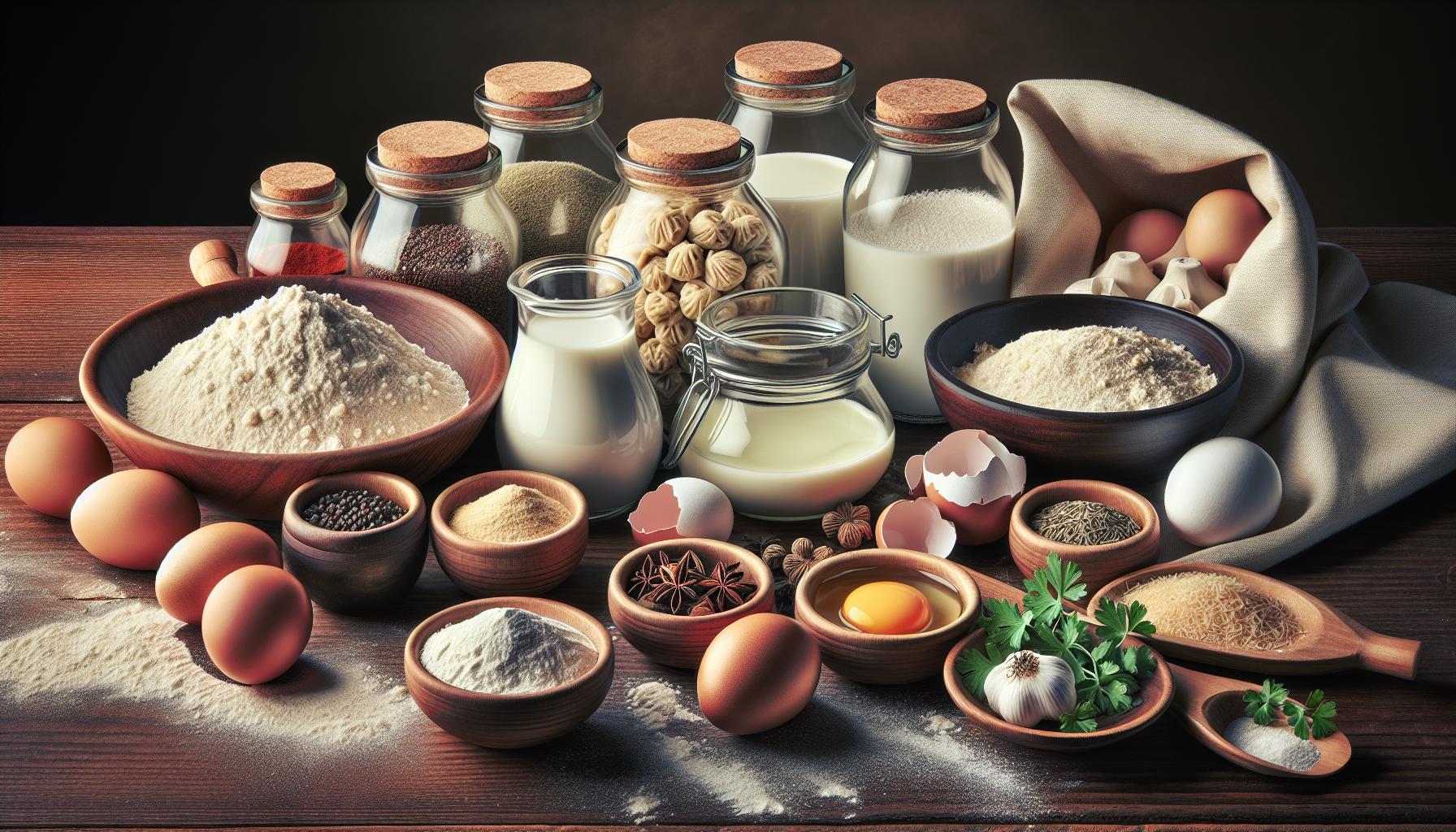Czech cuisine holds many delightful surprises and houzipantinky stands out as one of its most cherished comfort foods. These traditional Czech dumplings combine the simplicity of homemade bread with the warmth of generations-old family recipes. Pronounced “ho-zi-pan-tin-ki,” this beloved dish transforms basic ingredients like flour, eggs and milk into pillowy-soft dumplings that perfectly complement hearty Czech stews and sauces. While their origin dates back centuries to rural Bohemian kitchens, houzipantinky continues to captivate food enthusiasts worldwide with its versatility and comforting appeal.
Food Call Houzipantinky
Houzipantinky food calls emerged as a traditional Czech signaling practice used to announce the serving of these beloved dumplings. This distinctive culinary communication method stems from communal dining traditions in rural Czech households.Origins and Cultural Significance
The houzipantinky food call originated in 19th-century Bohemian villages where families gathered for shared meals. Agricultural workers responded to specific vocal patterns: three short calls followed by a long melodic note. Historical records from Prague’s National Museum document these calls being used in 5 distinct regions across Bohemia between 1850-1920. Food call patterns for houzipantinky:-
- “Hou-zi-pan, tiiiinky!” – Standard mealtime call
-
- “Hou-hou-zip, paaan!” – Festive gathering call
-
- “Zi-pan-ti, kyyyy!” – Family dinner call
-
- Western Bohemian Style
-
- Short staccato notes
-
- Rising pitch pattern
-
- Used primarily at harvest gatherings
-
- Moravian Version
-
- Extended melodic phrases
-
- Lower pitch range
-
- Incorporated during religious festivals
-
- Modern Urban Adaptations
-
- Simplified two-note calls
-
- Shortened duration
-
- Used in Czech restaurants
| Region | Call Duration | Typical Pitch Range | Usage Frequency |
|---|---|---|---|
| West Bohemia | 3-4 seconds | High (C5-G5) | Daily |
| Moravia | 5-7 seconds | Low (G3-C4) | Weekly |
| Urban Areas | 1-2 seconds | Medium (G4-C5) | Monthly |
Essential Ingredients in Houzipantinky Recipes

Traditional Spice Blends
Czech houzipantinky incorporates three essential spice combinations that define its authentic taste:-
- Ground marjoram (2 teaspoons per batch) adds an earthy herbaceous note
-
- Caraway seeds (1 teaspoon per batch) provide a distinctive warm flavor
-
- White pepper (½ teaspoon per batch) creates subtle heat
-
- Salt (1½ teaspoons per batch) enhances overall taste
Key Base Components
The foundation of houzipantinky consists of five fundamental ingredients:| Ingredient | Amount per Batch | Purpose |
|---|---|---|
| All-purpose flour | 500g | Forms the dumpling structure |
| Fresh eggs | 2 large | Binds ingredients together |
| Whole milk | 250ml | Creates soft texture |
| Active dry yeast | 7g | Provides light consistency |
| Bread crumbs | 100g | Adds density control |
-
- Flour provides structure through gluten development
-
- Eggs create richness through protein content
-
- Milk enhances tenderness through fat content
-
- Yeast generates air pockets through fermentation
-
- Bread crumbs absorb excess moisture through starch content
How to Prepare Classic Houzipantinky
Creating authentic houzipantinky requires precise timing and attention to detail. The following steps ensure optimal texture and flavor in these traditional Czech dumplings.Step-by-Step Cooking Method
-
- Mix 2 cups lukewarm milk with 2 teaspoons active dry yeast and 1 tablespoon sugar
-
- Combine 4 cups flour with 1 teaspoon salt in a large bowl
-
- Beat 2 eggs into the milk mixture
-
- Pour wet ingredients into dry ingredients and knead for 8-10 minutes
-
- Cover dough and let rise for 45 minutes at room temperature
-
- Punch down dough and form into 2-inch balls
-
- Roll balls in breadcrumbs until fully coated
-
- Place dumplings in a steamer basket with 2-inch spacing
-
- Steam for 20 minutes over medium heat
-
- Test doneness with a toothpick – it comes out clean when ready
-
- Maintain water temperature at 180°F (82°C) for consistent steaming
-
- Space dumplings 2 inches apart to prevent sticking
-
- Line steamer basket with parchment paper for easy removal
-
- Add water to steamer every 10 minutes to maintain proper moisture
-
- Let dumplings rest 5 minutes after steaming
-
- Cut dumplings with thread instead of knife to preserve texture
-
- Store leftover dumplings in an airtight container for up to 24 hours
-
- Reheat by steaming for 5 minutes or microwaving for 30 seconds
| Cooking Stage | Temperature | Duration |
|---|---|---|
| Dough Rise | 75°F (24°C) | 45 min |
| Steam Cook | 180°F (82°C) | 20 min |
| Rest Period | Room Temp | 5 min |
| Reheat Time | 180°F (82°C) | 5 min |
Serving and Presentation Styles
Houzipantinky presentation embraces both traditional Czech customs and modern plating techniques. The serving methods enhance the visual appeal while maintaining the cultural significance of these cherished dumplings.Traditional Accompaniments
Traditional Czech accompaniments for houzipantinky include:-
- Sauerkraut Medley: Braised sauerkraut mixed with caraway seeds serves as a tangy base
-
- Rich Gravies: Dark meat gravies infused with mushrooms or onions complement the soft texture
-
- Roasted Meats: Tender pork roast or duck confit creates a classic pairing
-
- Seasonal Vegetables: Braised red cabbage or root vegetables add color and nutrition
| Portion Type | Quantity | Recommended Sides |
|---|---|---|
| Individual | 3-4 dumplings | 1/2 cup gravy + 1 cup vegetables |
| Family Style | 12-15 dumplings | 2 cups gravy + 3 cups vegetables |
| Festive Meal | 20-25 dumplings | 3 cups gravy + 4 cups vegetables |
-
- Arranging dumplings in a circular pattern
-
- Placing meat portions at the center
-
- Drizzling sauce in a decorative pattern
-
- Garnishing with fresh herbs
-
- Adding colorful vegetable accents
Modern Interpretations and Fusion Dishes
Contemporary chefs transform traditional houzipantinky into innovative fusion creations while preserving their authentic Czech essence. These modern adaptations incorporate global ingredients like truffle oil, saffron infusions or wasabi paste to create distinctive flavor profiles.Popular Fusion Variations:
-
- Asian-Czech fusion featuring ginger-soy glazed houzipantinky
-
- Mediterranean-style dumplings with sun-dried tomatoes basil pesto
-
- Mexican-inspired variations with chipotle sauce poblano cream
-
- Indian fusion incorporating curry spices coconut milk
Contemporary Cooking Methods:
-
- Sous vide preparation at 145°F (63°C) for 45 minutes
-
- Air fryer finishing for crispy exterior texture
-
- Molecular gastronomy techniques creating foam sauces
-
- Deconstructed presentations with sauce spherification
| Modern Addition | Flavor Profile | Cooking Method |
|---|---|---|
| Truffle Oil | Earthy umami | Light drizzle post-cooking |
| Saffron | Floral aromatic | Infused in steaming liquid |
| Matcha Powder | Grassy subtle | Mixed into dough |
| Squid Ink | Briny mineral | Incorporated pre-steaming |
-
- Microgreen garnishes such as amaranth sprouts pea shoots
-
- Edible flower decorations including nasturtiums violets
-
- Flavored dust made from dehydrated vegetables herbs
-
- Geometric sauce patterns using multiple complementary sauces
Where to Find Authentic Houzipantinky
Traditional Czech restaurants in Prague’s historic districts serve authentic houzipantinky daily. U Modré Kachničky in Malá Strana specializes in classic preparations with traditional food calls at 12 PM 3 PM.Prague Establishments
-
- Café Savoy prepares houzipantinky using 150-year-old recipes
-
- Lokál Dlouhááá offers daily lunch specials featuring regional variations
-
- U Zlatého Tygra serves family-style portions with classic accompaniments
-
- Českỳ Krumlov Restaurant maintains original steaming techniques
Regional Czech Locations
| Region | Notable Restaurants | Specialty Style |
|---|---|---|
| South Bohemia | Budějovická Masna | Caraway-spiced |
| Moravia | U Třech Knížat | Extended melodic calls |
| West Bohemia | Plzeňská Rychta | Staccato-style calls |
| Central Bohemia | Středočeská Kuchyně | Traditional yeast-based |
International Locations
-
- Bohemian Spirit (New York) – Czech-certified ingredients
-
- Praha Restaurant (Chicago) – Authentic steaming methods
-
- České Centrum (London) – Traditional food call performances
-
- Český Dům (Berlin) – Regional recipe variations
Food Markets & Events
-
- Prague Food Festival (May) features 15 vendors serving houzipantinky
-
- Christmas Markets (December) showcase seasonal variations
-
- Farmers’ Markets in České Budějovice demonstrate traditional preparation
-
- Czech Cultural Centers host monthly cooking demonstrations
-
- CzechGastronomy.com lists certified establishments
-
- Prague Food Guide maps authentic locations
-
- Czech Tourism Board provides verified vendor directories
-
- Regional food heritage websites document traditional providers

